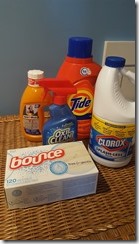Fun little memoir piece by Michael Malone in the NY Times the other day on the “Irish Alps,” the Irish-American version of the Borscht Belt: a Catskill getaway for the sons and daughters of Erin. Malone vacationed there with his family when he was a kid in the 1970’s and early 1980’s, by which point the Irish Alps was already a bit passed its prime.
According to Kevin Ferguson, who directed the 2016 documentary “The Irish Catskills: Dancing at the Crossroads,” there were once as many as 50 Irish themed inns, along with several bungalow communities sporting shamrocks on their shingles. Today there are a scattered few.
“I’d say 1955 to 1965 was the sweet spot,” Mr. Ferguson said. “Mobs of people would be walking down Route 145, going from place to place.”
They were the immigrants of the Bronx and Brooklyn, fleeing stifling tenements for the Catskills’ clean air, the traditional music, the dance, the camaraderie. “It was like a little Ireland without having to go to Ireland,” said John Connors, singer in the Irish Express, a band that has played the East Durham scene since the early 1980s.
The three A’s — air conditioning, airlines, assimilation — are said to have been the resort communities’ downfall. After that mid’ 60s heyday, many immigrants had departed the tenements, plane travel was no longer limited to the rich and the Irish became, well, America(Source: NY Times)
Most of what I know about the Borscht Belt came from Dirty Dancing. (“Nobody puts Baby in the corner.”) And, of course, from listening to all those Borscht Belt comedians tell bad jokes on Ed Sullivan for all those years. (Think Jackie Mason and Henny “Take my wife, please” Youngman.)
But the Irish Alps? Or, as I’ve decided to think of it, The Boxty Belt?(For boxty, think Irish latkes.) Never heard of it.
I was familiar with the Irish Riviera – shorthand: the Irish Riv – which is half the towns on the South Shore (i.e., seaside communities that are south of Boston). That’s our version of the Irish Riv. New York, New Jersey, Michigan, and Indiana have their own. And there are plenty of towns on Cape Cod that are plenty Irish Riv-ish. (And, yes, The Dennis-es, I’m looking at you. Plus, at minimum, the street my cousin Barbara has her Pocasset cottage on.)
Growing up, we sometimes vacationed on the Cape, in Bass River (part of South Yarmouth). “Vacationed.” That sounds sort of swell, doesn’t it? What we did was rent the small Cape ranch of my parents’ friends Mae and Nemo for two weeks. You could walk to the beach, and to shops, including an Irish gift store, where – pious little prig that I was – I once bought some rosary beads. They were of surpassing ugliness: weirdly shaped brown beads – were they pebbles? - that looked like badly decayed teeth. A normal pious prig of a child would have gotten rosary beads made of green glass. And/or had a Celtic cross. But, no, I wanted something that looked like my grandmother’s teeth.
I don’t know whether that gift store still exists, but South Yarmouth is now home to the Cape Cod Irish Village, which is a hotel cum pub and restaurant, and features regular Irish-y entertainment. So it sounds a little like what’s still on offer in the Irish Alps, albeit to lesser extent than in those halcyon days before air conditioning, airlines, and assimilation.
I grew up in a predominantly Irish Catholic enclave. Our parish church and school were staffed by Irish American priests and nuns. It was difficult to escape a sense of Irish consciousness. We celebrated St. Patrick’s Day. We listened to the Jimmy Dooley “Irish Hour” on the radio. It was pretty clear that being Irish was superior to any other option.
But there was never a sense of “Worcester Irish” in the same way as there was and is a sense of “Boston Irish”. Somewhere way back in the day, I read that the Worcester Irish were never as insular and us-vs.-them as the Boston edition. I can’t remember the exact reasons for this, but I think it had something to do less of a contentious relationship between the immigrant Irish and the incumbent Yankees. Was it because the Irish who came to Worcester weren’t poor, bedraggled famine Irish, but came - like my great-grandparents, who immigrated in the 1870’s – in the next wave? They were by no means wealthy, but they had more than a pot to piss in. My sister Trish has Bridget Trainor’s trunk, which is actually quite pretty.
In any case, by the time if got down to my generation, we may not have had air conditioning. We may never have flown on a plane. But, by god, we were assimilated. No one joined the AOH (Ancient Order of Hibernians.) I was aware of Irish step dancing because I saw all those Boston Irish girls stepping on Community Auditions, Boston’s answer to the Ted Mack Amateur Hour. No one I knew took Irish step dancing. The kids I knew who took dance took tap. And no one I knew deliberately went on an Irish-themed vacation. If you went to the Cape, or to Hampton Beach (which were basically the only places anyone went unless, like us, they didn’t trek every other year to Chicago to visit family), you were likely surrounded by Irish Americans. But that was the by product, not the main event.
Still, it was fun to read about the Irish Alps.
Who knew?
------------------------------------------------------------------------------------------------------------------------------------------------
And a tip of the scally cap to my brother-in-law, Rick, who went to camp, and later worked as a busboy/waiter, in the Borscht Belt. (Nobody puts Rick in the corner.)



